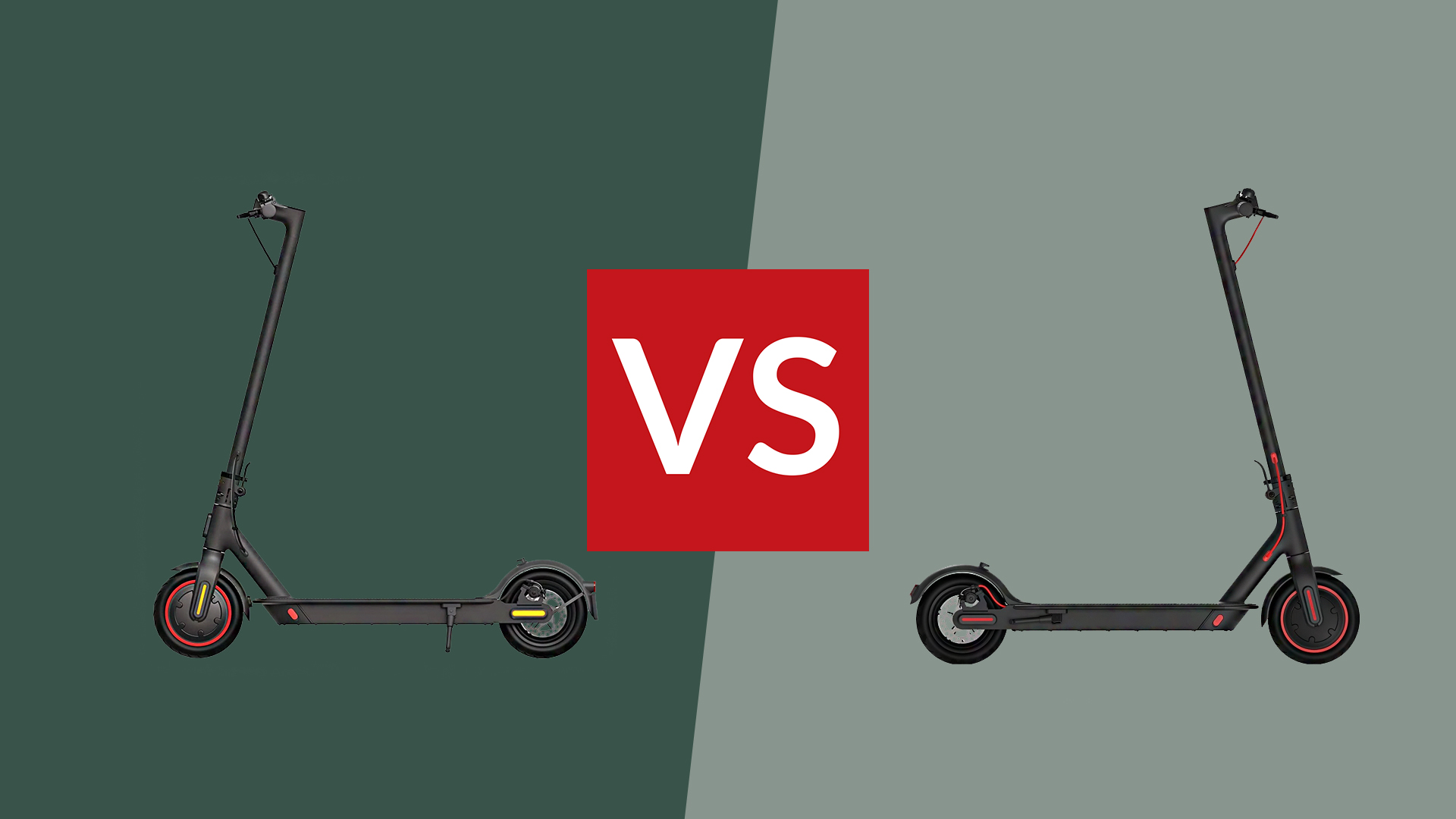Xiaomi M365 vs Xiaomi M365 Pro: what is the difference?
Find out how Xiaomi’s iconic Xiaomi M365 matches up to the more premium Xiaomi M365 Pro in the battle to be the best electric scooter


Is the Xiaomi M365 Pro better than the original Xiaomi M365? Launched in December 2016 by Chinese tech company Xiaomi — pronounced ‘shau mee’, and then better known for its budget smartphones and smart home gear – the original M365 was one of the first commercially available electric scooters, the most popular electric scooter on the market, and arguably the most iconic. It’s often called simply the Mi electric scooter.
Then in 2019 came the Xiaomi M365 Pro, surely one of the most eagerly anticipated electric scooters. So what’s the difference between the original Xiaomi M365 and the upgraded Xiaomi M365 Pro? The successor adds a more powerful engine and a bigger battery that allows it to go further on a single charge, along with a colour display. However, there are plenty of reasons why the original Xiaomi M365 is still one of the best cheap electric scooters available.
Xiaomi may have expanded its repertoire since the launch of the Xiaomi M365 Pro, with the Mi Pro 2 and Mi 1S, but is it a worthy upgrade that’s worth the extra money? Let’s take a look at how the two electric scooters compare so you can see which one is the best electric scooter for you.
Xiaomi M365 vs Xiaomi M365 Pro: Price
Xiaomi M365 vs Xiaomi M365 Pro: Design
The most obvious difference between the Xiaomi M365 Pro and the Xiaomi M365 is that the newer model boasts a bright colour display, which lets you know the current battery level as a percentage, your speed, and what mode you’re in. The original Xiaomi M365 just has a simple and very basic battery indicator; you use an app on your phone as a dashboard and statistic-collector.
Overall you’d think that the newer Xiaomi M365 Pro scooter would be a sleeker, miniaturised version of the Xiaomi M365, but that’s not how it turned out. At 113x43x118 cm, the Xiaomi M365 Pro has a slightly longer and higher handlebar, and a longer, wider base plate, so it’s physically bigger than the Xiaomi M365, which clocks-in at 108x43x114 cm. There’s not much in it, but there are consequences for weight. All electric scooters in Xiaomi’s M365 have big reputations, but they’re heavyweights in more ways than one. While the original Xiaomi M365 weighs 12.5 kg, the Xiaomi M365 Pro ups that to 14.2kg.
The genius of Xiaomi electric scooters for commuters is in their folding design that makes them easy to store when you get to work. At 113x43x49 cm, the newer Xiaomi M365 Pro is slightly larger – as well as heavier – than the Xiaomi M365, which measures 108x43x49 cm when folded-up.
There are a lot of similarities between the two – such as the inclusion of a headlight and rear-light, an IP54-rated splash-proof chassis, and a companion smartphone app – but there are a few ways where the Xiaomi M365 Pro fully justifies its heavier design.
Get all the latest news, reviews, deals and buying guides on gorgeous tech, home and active products from the T3 experts
Xiaomi M365 vs Xiaomi M365 Pro: Features
At 15.5 mph, both the Xiaomi M365 and Xiaomi M365 Pro have an identical top speed, but that’s where the similarity ends on core features. In all other regards the Xiaomi M365 Pro wins out.
For starters, it’s got a more powerful motor at 300W nominal power compared to the Xiaomi M365’s 250W. However, where the main difference really lies is with their batteries; the Xiaomi M365 Pro’s 12.8Ah battery easily trumps the Xiaomi M365’s 7.8Ah, something that enables the newer model to have a much longer range. Capable of going for 18.6 miles/30 km on one charge, the original Xiaomi M365 might give you instant range anxiety when you discover that the newer model extends that by a whopping 50% to a maximum of 28 miles/45 km.
It’s not all good news for owners of the Xiaomi M365 Pro, whose battery takes 8.5 hours to recharge compared to the Xiaomi M365’s 5 hours.
So despite the perceived advantages of the more powerful, longer-lasting Xiaomi M365 Pro, if you’re mainly planning short journeys it could be that the more affordable Xiaomi M365 is better suited to you.
Xiaomi M365 vs Xiaomi M365 Pro: Performance
There’s another key difference between the Xiaomi M365 and the Xiaomi M365 Pro, and that’s with the maximum angle they can travel at. While the original can tackle a gradient of 14% with no problems, the newer model only manages 10% gradients. So if you’re planning to use your electric scooter on any kind of incline, you might think that the Xiaomi M365 might be better for you.
However, in practice the Xiaomi M365 Pro’s more powerful motor trumps the original and makes riding on any kind of challenging terrain – including inclines – much easier. Unfortunately nor the Xiaomi M365 nor the Xiaomi M365 Pro have any kind of suspension, which would have made riding its electric scooters much more comfortable.
While both scooters have 8.5-inch pneumatic tyres, their brakes also differ – and with consequences. Both have electrical brakes on the front, but the Xiaomi M365’s disk brakes on the rear are up-sized on the Xiaomi M365 Pro. The outcome of that is a shorter braking distance – while going at top speed – of 2m for the Xiaomi M365 Pro compared to 2.4m on the Xiaomi M365. That could make a big difference when you have to make an emergency stop.
Xiaomi M365 vs Xiaomi M365 Pro: Verdict
The newer Xiaomi M365 Pro is more comfortable to ride on. After all, it’s got a slightly larger base plate and a higher handlebar, which helps with riding pose. It also brakes sooner and has a cool colour display to let you know exactly what’s going on. Add a bigger battery and longer range and it’s hard to argue against the newer model, but if you’re after a smaller, lighter and cheaper electric scooter then the Xiaomi M365 could still do a fine job. However, if you’re thinking of upgrading from the Xiaomi M365 to the Xiaomi M365 Pro, consider jumping a generation and heading straight for the Xiaomi Pro 2.
Liked this?
- Read T3's full Xiaomi Mi Pro 2 review
- Xiaomi Mi 1S review
- Best electric scooter: top e-scooters for adults
- Best cheap electric scooter deals
Jamie is a freelance journalist, copywriter and author with 20 years' experience. He's written journalism for over 50 publications and websites and, when he's not writing, spending most of his time travelling – putting the latest travel tech through its paces.
